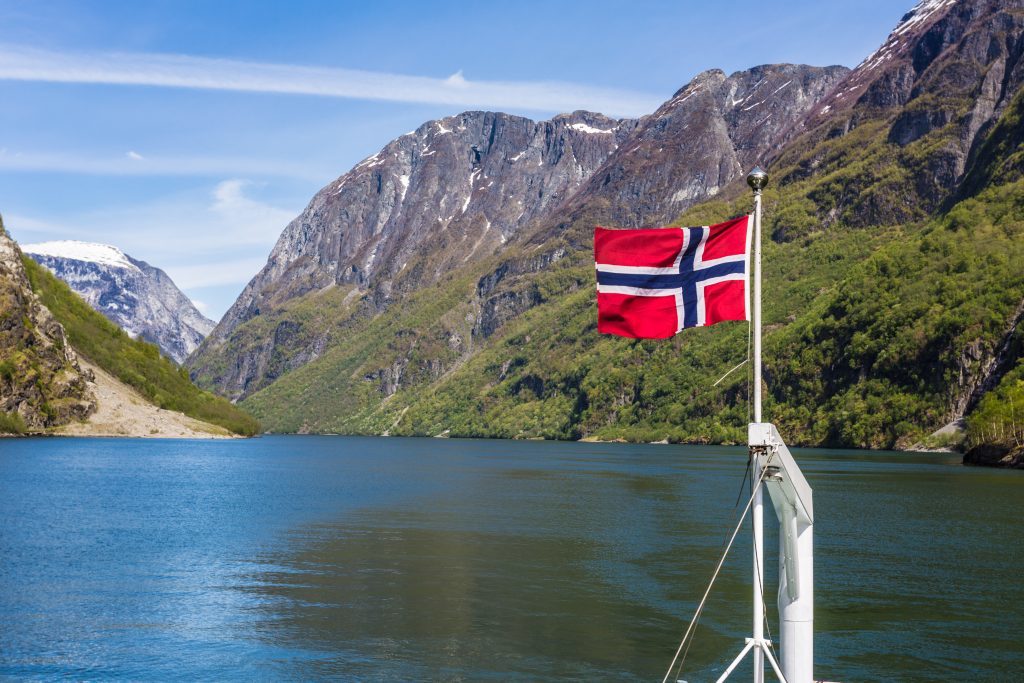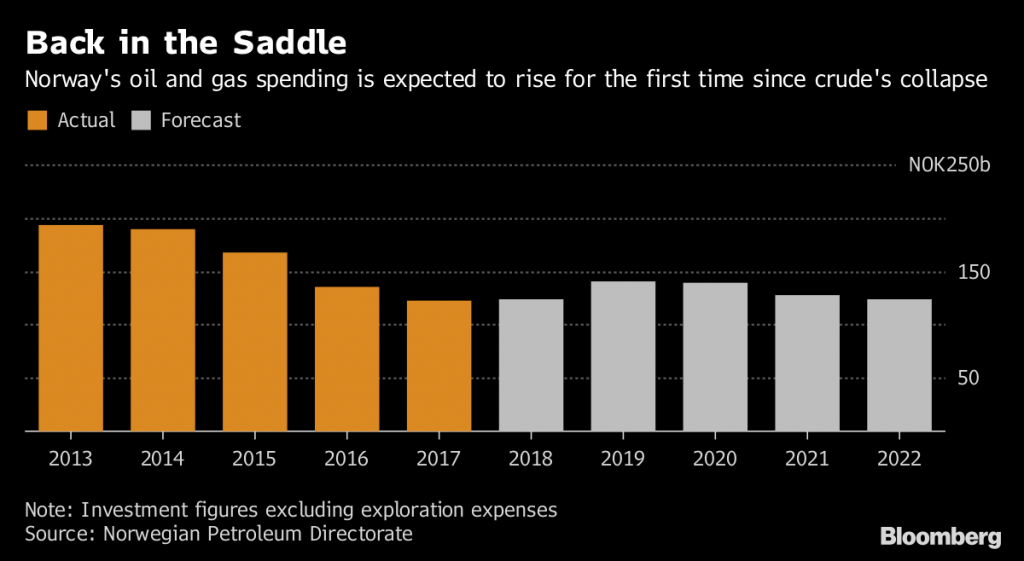
After suffering through the worst crisis in a generation, Norway’s oil industry is now back on its feet.
Here are five charts that tell the story of how Norway’s biggest industry tackled the crisis, from the surprising windfalls to the challenges ahead. Most are based on new data from the Norwegian Petroleum Directorate.
1. Recovering Investments
Oil companies in Norway are increasing spending for the first time this year since crude prices collapsed in 2014, the directorate predicted in annual forecasts published last week. Optimism has returned with crude prices hitting $70 a barrel at the same time as drastic cost cuts have made projects even more profitable.
2. Costs Slashed
Forced to react as crude prices hit a low of $27 a barrel in January 2016, oil companies not only cut back on activity levels but also implemented sweeping efficiency programs to lower expenses across their operations. Drilling an exploration well offshore Norway cost about 240 million kroner on average in 2017, half the price from 2013 and 2014, according to the NPD. Operating costs have been reduced by 30 percent in the same period.
3. Production Revival
Arguably the most surprising result of the oil crisis is a spectacular rise in production. Companies have been able to pump more oil and gas thanks to cheaper and faster drilling, smoother platform operations and simpler and quicker development work. After reducing long-term output forecasts in January 2015 and 2016, the NPD raised expectations for the second year in a row last week. Total production is now seen close to 2004’s record in 2023.
4. Exploration Concerns
But looking ahead, there’s concern. The number of wells drilled offshore Norway was the lowest in almost a decade in 2016 and activity hasn’t picked up since. As discoveries also get smaller, Norway isn’t close to replacing production with new reserves. Explorers must get moving if the country can hope to limit a new drop in output from the middle of the next decade, the NPD’s head Bente Nyland said on Thursday.
5. Big Oil Flees
During the oil slump, BP Plc and Exxon Mobil Corp. gave up on their role as active operators on the Norwegian continental shelf, with Total SA all but following suit. After disappointing results in a record exploration campaign in the Barents Sea in 2017, all the majors except for Royal Dutch Shell Plc snubbed a new, Arctic-focused licensing round. That’s created concerns in Norway’s oil industry, as the Barents holds more than half of the country’s undiscovered resources.

Recommended for you
